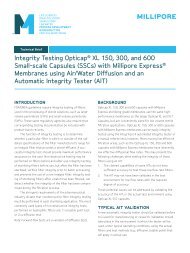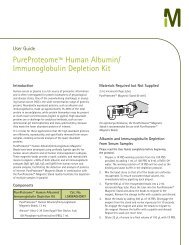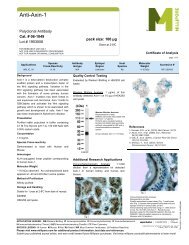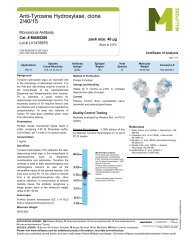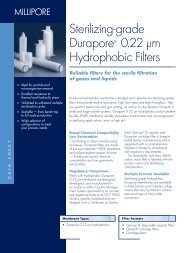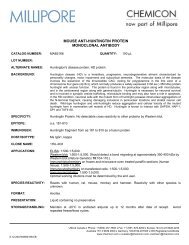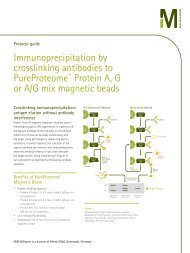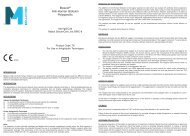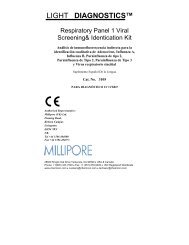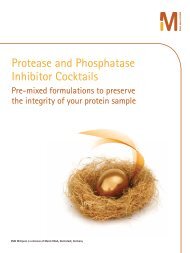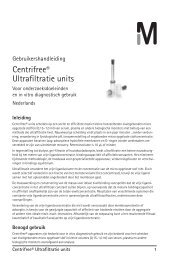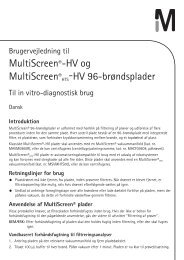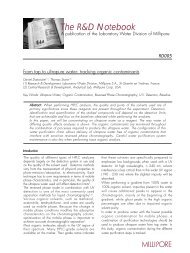Millistak+HC AppGd_textC.qxd - Millipore
Millistak+HC AppGd_textC.qxd - Millipore
Millistak+HC AppGd_textC.qxd - Millipore
Create successful ePaper yourself
Turn your PDF publications into a flip-book with our unique Google optimized e-Paper software.
Steam-in-Place Sterilization<br />
While working with steam, all<br />
necessary precautions should be<br />
taken to prevent injury. All hot lines<br />
and housings should be labeled and,<br />
if possible, insulated. Proper signage<br />
should be displayed, warning of any<br />
hot surfaces. All persons involved in<br />
the steaming operation should be<br />
outfitted with appropriate personal<br />
protective equipment.<br />
Before starting the steam-in-place<br />
(SIP) procedure, check for the following:<br />
• The filter housing is installed and<br />
the correct product filter is in place.<br />
• Filter retainer plates are in place<br />
above and below the Millistak+ HC<br />
cartridges.<br />
Millistak+ HC Filters Application Guide<br />
• The product filter is dry.<br />
Note: If the assembled stack has<br />
been tested for leaks, as described<br />
above, a blow-down to remove<br />
residual water from within the<br />
filter media is required. This is<br />
accomplished by applying a 5 psi<br />
forward pressure to the feed side<br />
of the housing to force the water<br />
through for approximately 30<br />
minutes, or until the water flow<br />
is observed to have stopped.<br />
• All valves are closed. Silicone<br />
tubing is attached to the bleed<br />
valves and directed to a<br />
condensate drain.<br />
The manual operations described in<br />
this procedure should be performed<br />
in the given sequence. For automatic<br />
SIP procedures, refer to the Principles<br />
of Steam-In-Place Technical Brief<br />
(Lit. No. ET011EN00).<br />
23



